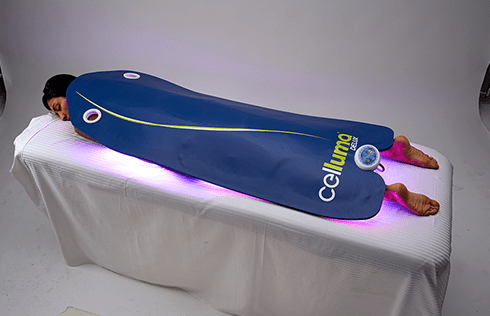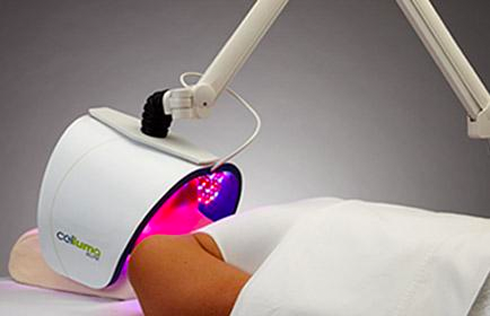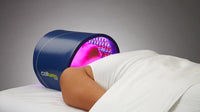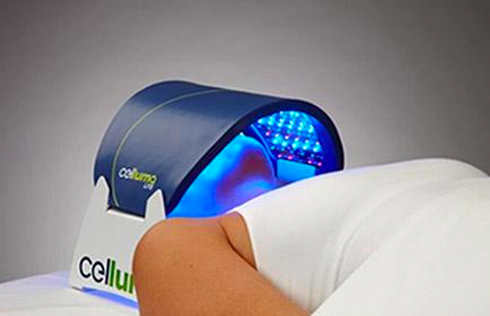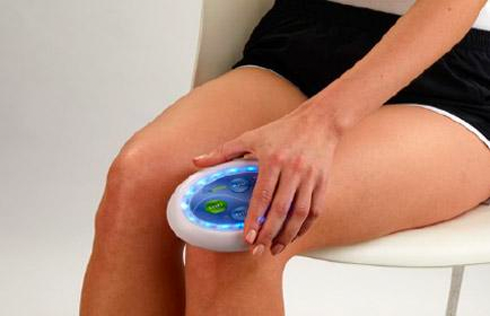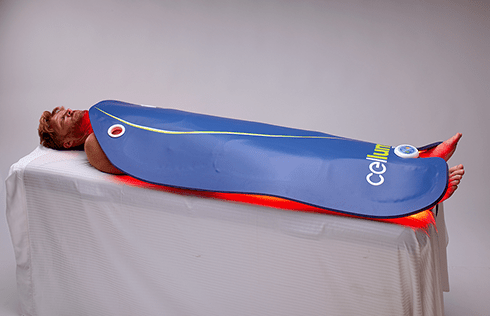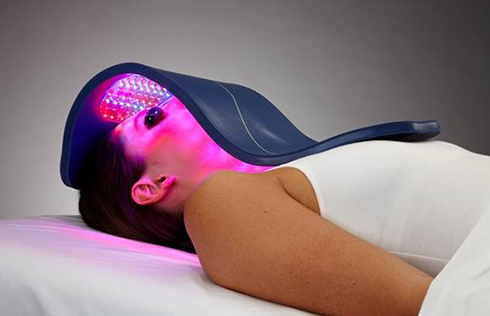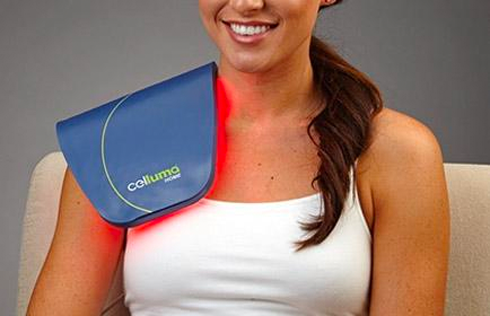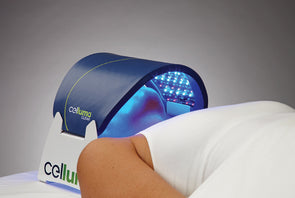Red Light Therapy Pros and Cons

If you are thinking about investing in a red light therapy device, you probably have a lot of questions about features, treatment options, cost, and health benefits, just to name a few considerations.
Whether you are a professional looking for a device to add variety and effectiveness to your treatment menu or a home user looking to treat chronic pain or aging skin, purchasing a red light therapy device is a decision that shouldn’t be taken lightly.
Buyer Beware
There are literally hundreds of red light therapy devices available on Amazon with various marketing claims. Let’s take a look at some red light therapy pros and cons to help you make an informed purchasing decision.
Depending on the red light therapy device you decide to purchase, you can treat health concerns including aging skin, chronic pain, wound healing, inflammation, hair loss and acne prone skin.
LED Red Light Therapy and Aesthetic Procedures
Many aesthetic procedures deliberately create an “insult” to the tissue in order to elicit a healing response on the part of the body. While the effectiveness of these types of procedures will likely continue to be refined, low level light therapy is therapeutic in nature and used to help the tissue heal and repair following both mild as well as deeply ablative procedures.
What distinguishes the Celluma SERIES of red light therapy devices from other devices on the market is its ability to cover a large treatment area and conform closely to surface of the skin for accelerated healing.
Proximity to the Skin is Key
The key to efficacy in low-level light therapy is the proximity of energy emission to the tissue. Emitting light right at the surface of the skin ensures optimal energy absorption, maximum cellular effect and enhanced therapeutic health benefits.
The body does not effectively absorb light energy when it is emitted only a few inches from the surface of the skin. So, the issue is not how much energy the device delivers . . . the key is how much energy is available for absorption which is greatly enhanced when the device can be placed closer to the skin.
Safety First
Light energy delivered from a LED red light therapy device is completely safe and there is no risk of over dose as long as it is used correctly and the contraindications are understood. Low-Level light therapy only affects cells that are compromised at the mitochondrial level, triggering a biochemical reaction that results in increased cellular activity and cellular healing.
There is minimal risk of injury using LED devices and as a result, they are “non-attended” treatments, eliminating the need for additional treatment staff when used in a clinical setting.
Before using a red light therapy device anywhere on your body, you should find out about the safety and efficacy of the device. The best measure of efficacy and safety is a device’s FDA clearances.
More specifically, it is important to understand what particular “indication-for-use” a device has been cleared for by the FDA.
Such clearances require that the device manufacture submit clinical research data and safety data to the Agency to prove the device is both safe and effective. In the case of the Celluma, it is FDA-cleared for 10 different indications-for-use in treating a variety of skin, muscle and joint conditions.
In addition, the Celluma is approved for sale in the European Union as a Dermal Wound Healing Device.
Red Light Therapy Pros: Anti-Aging Treatment
Red light therapy has many benefits but let’s start with the perpetual battle to keep our skin and body from experiencing the health issues that arise as we age. As the years continue to pass, we all notice how the laws of gravity seem to turn on us.
We quickly learn the lesson that aging is not limited to just the skin on our faces. Whether it’s the under eye wrinkles that make us look tired all the time, the deep laugh lines around the mouth, or the saggy skin on our necks, anti-aging products fill the shelves offering to tighten, firm, or fill in those fine lines and wrinkles.
Treating Pain
Unfortunately, aging concerns are not just limited to our skin and outer appearance. We can also experience a wide variety of muscle and joint issues. Many of these issues are proven to respond well to medical grade LED red light therapy treatments.
The Celluma SERIES of FDA-cleared LED machines have several muscle and joint clearances including the treatment of arthritic pain.
Cons to Red Light Therapy for Anti-Aging
None!
Red Light Therapy Pros: Increased Collagen Production
One of the reasons for all those wrinkles, fine lines, and joint pain issues is due to low levels of collagen. Collagen is the main structural protein found in your skin and other connective tissue. Collagen is literally what holds our body together.
Glue that Holds the Body Together
Fibroblasts make collagen fibers, so it stands to reason that the more, and healthier, fibroblasts we have in the skin, the more and better collagen fibers are made.
And as we all know, collagen synthesis and maintenance is the bedrock of anti-aging. Increased fibroblast activity is just one of the health benefits of LED red light therapy.
Healthy collagen levels are what give us a glowing complexion, firm skin, strong nails, dense bones, and healthy hair. It is also essential in keeping muscles, joints, and tendons in healthy working order.
Cons to more Collagen Production
None!
Red Light Therapy Pros: Hair Restoration Treatment
Red light therapy devices have been cleared by the FDA for the treatment of male and female pattern hair loss. Substantial research has supported light therapy’s ability to regrow hair lost due to androgenetic alopecia with minimal degrees of side effects and adverse events.
Stand Alone or Add-on Treatment
Red light therapy for hair can be an effective stand-alone therapy or adjunctive therapy to medication and topical prescriptions for optimal hair regrowth. Dermatologists and medical practitioners specializing in hair restoration can ensure proper diagnosis and treatment recommendations.
Individuals should consult with their physician for a correct diagnosis and to determine if red light therapy is suitable for their category of hair loss.
What the Research Says
In one review article, Efficacy of non-surgical treatments for androgenetic alopecia: a systematic review and network meta-analysis (© 2018 European Academy of Dermatology and Venereology), A.K. Gupta, et al, states that, “Relative effects show LLLT as the superior treatment” when comparing light therapy to the six most common non-surgical treatment options for treating androgenetic alopecia in both men and women including dutasteride 0.5 mg, finasteride, 1 mg, minoxidil 2%, minoxidil 5% and platelet-rich plasma (PRP).
Cons to using Red Light Therapy for Hair Restoration
None!
Red Light Therapy Pros: Treatment of Chronic Pain
Chronic pain can be a serious health issue for many people and poor circulation and the lack of oxygen and other essential molecules (i.e., glucose, Adenosine Triphosphate (ATP)) in blood vessels can be a cause of pain or a lack of sensation.
All about the Wavelength
When it comes to effective treatment of pain conditions with red light therapy, wavelength is key. Compared to blue light therapy, red and near-infrared wavelengths can penetrate deep into the muscle and joint tissue to alleviate pain, increase circulation and decrease inflammation.
Near Infrared light therapy provides compromised cells with extra energy to accelerate the natural repair of compromised tissue cells, foster cell production, and restore homeostasis within the body.
Light energy stimulates the release of nitric oxide, causing blood vessels to increase in diameter (vasodilation) and allowing more blood flow, oxygen, and other important factors to be delivered.
NASA Connection
Originally developed by NASA engineers for pain management and injury treatment on long-term space missions, red light therapy is used today as a safe and natural method of treating a variety of pain and skin conditions.
But you don’t need to be an astronaut to reap the benefits of near infrared light therapy for pain, and you don’t even need to leave your house. With the development of portable near infrared light therapy device design, people can take advantage of self-administered light therapy at home.
Cons to using Red Light Therapy for the Treatment of Chronic Pain
None!
Red Light Therapy Pros: Acne Treatment
Blue and red LED light therapy is widely used as an effective option for the treatment of mild to moderate inflammatory acne vulgaris. One study concluded that “…blue light and red light may act synergistically in improving acne by combining antibacterial and anti-inflammatory action, rendering phototherapy with blue and/or red light an effective and safe treatment for acne vulgaris.₁
Cons to Using Red Light Therapy (or Blue Light) for Treating Acne:
None!
Red Light Therapy Pros: Wound Healing
Red light therapy has been shown to accelerate tissue repair, decrease wound size and accelerate wound closure as well as other health benefits. These mechanisms have been demonstrated to promote dermal wound healing, as well as reduce the pain associated with the healing process.
Patient Comfort & Recovery
Low level-light therapy has been shown to decrease a patient’s recovery time while reducing discomfort levels and enhancing overall outcomes.
More Pros for Red Light Therapy
It is ideally suited following any ablative procedure, as well as pre and post-surgery for the following reasons:
- Phototherapy has been shown to accelerate tissue repair, decrease wound size, accelerate the resolution of erythema, accelerate wound closure and prevent dehiscence2
- Phototherapy prior to surgery may reduce the incidence of hypertrophic scars and keloids3.
- Ongoing post-surgery photo-rejunvenation3 (activation of fibroblasts to produce collagen and elastin, stimulation of keratinocytes which produce keratin to provide structural strength to the skin).
- Post inflammatory hyperpigmentation prevention3.
- Activation of mast, macrophage and neutrophil cells can decrease inflammation and protect against infection.
- Phototherapy is anti-bacterial. The presence of P-acne bacteria can lead to post-operative infections, particularly in shoulder surgery. Using the professional-grade LED red light therapy prior to surgery can decrease the presence of this bacteria.
Cons to Using Red Light Therapy for Wound Healing:
None!
Red Light Therapy Pros: Whole Body Benefits
As you can see, there are a host of health benefits to regularly using red light therapy. The pros definitely outweigh the cons because there are little or no cons to using red light therapy!
Red light therapy is safe and clinically proven for the treatment of a variety of skin and pain management conditions. Red light therapy is also non-toxic, non-invasive, and a cost effective alternative to prescription drugs, invasive surgery and harsh topical skin treatments. The health benefits just keep stacking up!
A Few Things to Note
For the Celluma LED red light therapy devices, there are just a few contraindications. First, Celluma recommends light therapy treatments not be used on children. Light therapy is also not recommended for pregnant women to use over their belly or breasts when lactating.
There are also contraindications for cancer patients. It is recommended that light therapy not be used over a known cancer, or a metastasized, tumor.
If you suffer from cancer or if you are recovering from cancer, be sure to consult with your oncologist prior to using light therapy or before making any changes to your care routine.
Know the Science
If you are looking for more pros to using red light therapy, click here to learn more about the science behind red light therapy.
References:
- British Journal of Dermatology 2000; 142: 973 +/- 978.
Phototherapy with blue (415 nm) and red (660 nm) light in the treatment of acne vulgaris
P.PAPAGEORGIOU, A.KATSAMBAS* AND A.CHU
Unit of Dermatology, Imperial College of Science, Technology and Medicine, Hammersmith Hospital, DuCane Road, London W12 0NN, U.K. Adreas Sygros Hospital, Athens, Greece -
The effects of LED emissions on sternotomy incision repair after myocardial revascularization: a randomized double-blind study with follow-upRauirys Alencar de Oliveira & Gilderlene Alves Fernandes & Andréa Conceição Gomes Lima & Antônio Dib Tajra Filho & Raimundo de Barros Araújo Jr. & Renata Amadei Nicolau Received: 2 August 2013 /Accepted: 25 November 2013 Springer-Verlag London 2013
3. Light-Emitting Diodes (LEDs) in Dermatology. D. Barolet, M.D. 2008.


